How and why to turn (almost) any cake recipe into 6-inch mini cakes
Mini cakes are easy to make — and perfect for sharing.
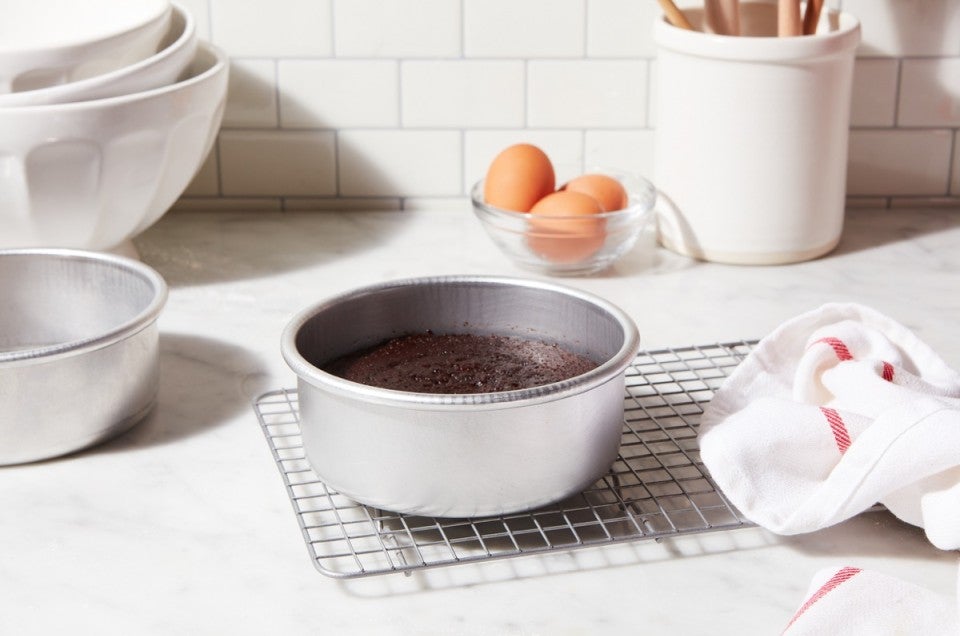

While king-sized sheet cakes and towering multi-layer cakes are eye-catching, there’s also a lot to be said for a smaller, subtler approach. Here’s why I’ve recently fallen in love with 6" mini cakes (and why you will, too):
Here and gone: A single 6" round cake is the ideal size for two to four people to finish in a single sitting. No leftovers to wrap; no half-eaten sheet cake gradually getting stale on the counter.
(Don’t) do the math: Serendipitously, your typical full-size cake recipe (an 8" square, 9" x 13" sheet cake, or a couple of 8" or 9" round layers) is perfectly sized to make two to four smaller 6" cakes: no gambling on overfilling pans, and no leftover batter. I’ll share complete details below, including the best way to make a single 6" cake.
Bake and freeze or share: Six-inch cakes are the perfect size for both freezing and sharing. You’re probably going to make multiples, so keep one and freeze the other(s) for later. Or give some away: Your local librarian, car repairman, vet tech, bookshop owner, or soccer coach will thank you.
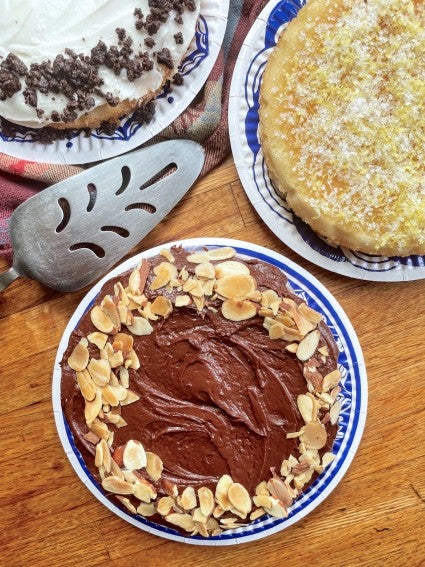
Everyone’s favorite flavor: Since you’re making more than one cake from a single batch of batter, you can easily flavor/frost each one a different way. Start with a simple vanilla cake recipe, divide the batter in half (or quarters), then listen to your imagination. Flavor and frost each layer differently: Lemon cake (just add lemon zest) with a hint of Fiori di Sicilia and lemon glaze? Check. Vanilla cake scented with almond extract and topped with fudge frosting and toasted almonds? Double check!
No oven needed: There’s no need to turn on your big oven; 6" cakes are the perfect size for baking in your air fryer.
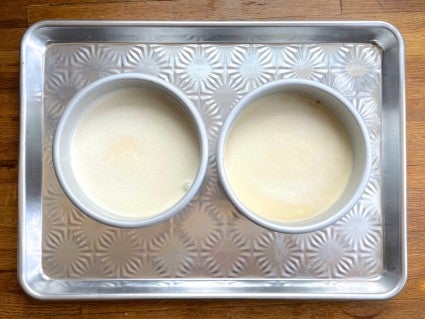
As noted above, it’s easy. Simply make the batter for your favorite cake recipe and instead of pouring it into the pan specified in the recipe, portion it into 6" round pans. (Be sure the pans are at least 2" deep.)
Now understand, the proportions aren’t exact here; if you’re following a recipe calling for an 8" round pan, expect your two 6” cakes, once baked, to be about 1/4" shorter than those in the original recipe. A 9" round pan recipe will yield two 6" cakes about 1/4" taller than the original. And a recipe calling for a 9" x 13" pan? The capacity of your four 6" pans is close enough to the original that you shouldn’t notice any difference in height.
Here are some common pan sizes and how many 6" cakes the batter for each will make:
| Original pan size | Number of 6" cakes |
|---|---|
| 8" round | Two |
| 9" round | Two |
| 8" square | Two |
| 9" square | Three |
| 11" x 7" | Three |
| 9" x 13" | Four |
Perhaps surprisingly, you won’t need to adjust the baking time when baking in a 6" pan. Since the depth of the batter in the smaller pans will be very similar to the batter in its original pan — it’s just been scooped into multiple pans instead of one — the baking time will remain within the original timeframe. Just to be safe, though, start checking for doneness about 5 minutes before the recipe says the cake will be ready.
While it’s preferable to bake all of your cake batter at once rather than bake it in batches (for the sake of its leavening), don’t let that stop you from baking cakes in succession if you're short on pans. While there may be a slight difference in rise from the first cakes to any succeeding ones, it should be fairly negligible.
As with any pan, it’s good to line the bottom with parchment to prevent sticking and crumbling; our 5 1/2" parchment squares actually do a good job here. No parchment on hand? Discover other effective methods for making sure your baked cake slips out of its pan easily.
A layer cake recipe calling for two 8" or 9" round pans will make four 6” mini cakes. Stack ’em up: Make two short stacks or one towering quadruple-layer cake!
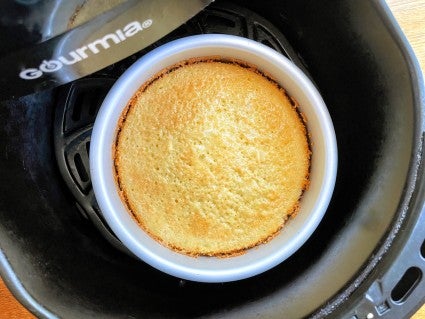
Absolutely. You’ll just have to reduce the recipe appropriately. If your recipe can make two 6" cakes, cut it in half. If it’s a larger recipe and would make four 6" cakes, divide the recipe by four. Interested in reducing recipes to fit an array of other size pans besides 6" round? See our article on reducing a recipe.
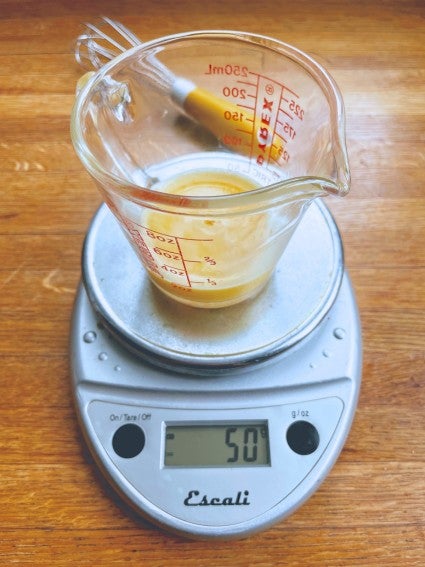
Hint: If you end up needing half an egg, simply whisk one large egg in a measuring cup and measure out half (a scant 2 tablespoons). If you have a scale, whisk the egg and measure out 25g. Freeze the other 25g for next time you need half an egg — because you know there WILL be a next time!

Yes, they do. Simply divide the topping (for pudding cakes) or layer of fruit and syrup (for upside-down cakes) evenly among however many 6" pans you’re using.

Frosting follows the same “math” as batter: Make the amount of frosting the recipe calls for and divide it among your 6" mini pans, rather than simply spreading it onto a single larger cake. If you’re reducing the recipe to make fewer 6" cakes, reduce the amount of frosting accordingly. Or have some fun: Make the same amount of frosting and use the extra for decorating!
Given the height and shape of a 6" round pan, it wouldn’t be appropriate for a tall (Bundt-style or tube) cake with multiple layers of filling; nor an angel food cake that needs tall sides to rise high. Instead, choose recipes that call for any of the pans listed above.
While most 6" pans on the market are 2" deep, this 6" pan is a more generous 2 1/2" deep, giving you a bit of extra reassurance when using a recipe that might be slightly larger than standard. Highly recommend.
Cover photo (King Arthur’s Original Cake Pan Cake) by Rick Holbrook; food styling by Kaitlyn Wayne.



September 26, 2024 at 4:50am
My aunt did wedding cakes for years. She used a sour cream pound cake recipe as her go to. Her cakes always rose just over the top of the pans so she would end up with perfect 2 inch high cakes after trimming the tops. How much batter would I add to pans so it does same without overflowing into a mess? I have 6x2 high and 8x1 high round pans. The 8 inch ones are my mother's they have to be 70 years old.
September 30, 2024 at 10:44am
In reply to My aunt did wedding cakes… by Linda (not verified)
Hi Linda, I'm afraid there's no magic formula that will give you the amount of batter to add to your pans to get them to rise just to the top and not overflow. Different cake recipes will rise differently, and some experimentation is bound to be necessary. I would start by filling your cake pans no fuller than 3/4 full. PJ's chart can help give you an idea of how many layers you're likely to get with the 6" pans (albeit not so highly risen layers). The following paragraph is also very helpful in terms of gauging how high you can expect various cake recipe pan conversions to rise, depending on the pan size the cake was originally intended for:
"Now understand, the proportions aren’t exact here; if you’re following a recipe calling for an 8" round pan, expect your two 6” cakes, once baked, to be about 1/4" shorter than those in the original recipe. A 9" round pan recipe will yield two 6" cakes about 1/4" taller than the original. And a recipe calling for a 9" x 13" pan? The capacity of your four 6" pans is close enough to the original that you shouldn’t notice any difference in height."
November 24, 2023 at 7:37am
"Turning any cake recipe into 6-inch mini cakes offers a delightful twist, perfect for intimate celebrations or portion control. The reduced baking time ensures a moist interior, while creative layering allows for diverse flavor combinations. Embrace versatility and charm with this approach to elevate your baking game!"
November 14, 2023 at 10:24am
I’m converting a 10’’ round cake tin for a Xmas fruit cake into six 4” cake tins sides are a bit under 2” should I make taller sides with parchment collars ?
Many thanks
Janis
November 18, 2023 at 4:28pm
In reply to I’m converting a 10’’ round… by Janis clark (not verified)
Hi Janis, the total volume of your (6) 4" cake pans will be a little short as compared to the 10" cake pan, so you might want to take the precaution of adding parchment collars to the smaller cake pans and baking them on a parchment-lined sheet tray.
February 22, 2023 at 2:07pm
Mini scones pan to make bite size mini cakes. There was no information with it. Do you grease the sconce pan? Any other was to use it.
February 24, 2023 at 10:18am
In reply to Mini scones pan to make bite… by Mary Bair (not verified)
Hi Mary! The mini scone pan is wonderful for all sorts of treats. You could use it for brownie bites, mini cakes, small muffins or quick bread bites. We would recommend greasing the pan to help ensure that your baked goods don't stick. As far as baking time, that will vary between recipes, but generally 15-20 minutes at 350 is a good starting point (for cakes, brownies, etc.) If you ever have a specific recipe in mind, please do reach out! 1-855-371-2253 is the number for our Baker's Hotline. We are available Monday-Friday from 9AM to 9PM EST and on Saturday/Sunday from 9AM to 5PM EST. Happy Baking!
March 28, 2023 at 9:31am
In reply to Hi Mary! The mini scone pan… by rsalerno
I make biscuits and cornbread with mine. Little cornbread triangles are so cute. I do wish your scone recipes had the times for using a mini scone pan though.
March 28, 2023 at 1:36pm
In reply to I make biscuits and… by Shanan (not verified)
Hi Shanan, you can bake scones in the mini scone pan at 425F for about 19-20 minutes. Happy Baking!
February 3, 2023 at 10:54am
I started making mini-cakes as a result of this article and love them. During the holidays when the highlight of the meal is often the desserts they were so great to add to the dessert table. They are adorable and I usually serve two different cakes. During the holidays it was a spice cake and a chocolate cake. I make the layers ahead and freeze. Then I can frost the day of the party. Because of their size guests can have a slice of cake (or two) plus some cookies, pie, mini-tarts, etc. They also help make the dessert table look very bountiful. Love them.
Pagination